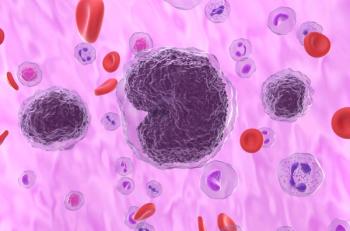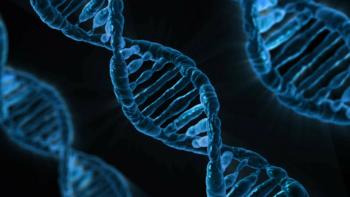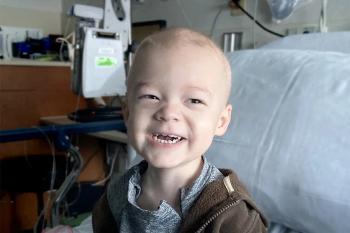
Ruxolitinib Cream Successfully Treats Itch in AD, Is Safe and Effective in Adolescents
Patients with atopic dermatitis (AD) who received ruxolitinib cream experienced a rapid, clinically meaningful, and sustained improvement in their itch.
Patients with atopic dermatitis (AD) who received ruxolitinib cream experienced a rapid, clinically meaningful, and sustained improvement in their itch, according to a poster presented at the American Academy of Dermatology’s annual meeting, held virtually April 23-26.1
Ruxolitinib cream is a topical selective inhibitor of Janus kinase (JAK) 1 and JAK2 being developed to treat AD. The treatment was studied in 2 studies of identical design: TRuE-AD1 (NCT03745638) and TRuE-AD2 (NCT0374651).
The studies included patients ≥ 12 years old who had AD for ≥ 2 years. A total of 1249 patients were randomized 2:2:1 to receive ruxolitinib 0.75% twice daily (n = 500), ruxolitinib 1.5% twice daily (n = 499), or vehicle cream (placebo) twice daily (n = 250) for 8 weeks of double-blinded treatment.
Patients taking ruxolitinib continued taking the treatment for 44 weeks while patients randomized to take the placebo cream were re-randomized 1:1 to one of the ruxolitinib regimens.
The patients completed an electronic diary every evening and reported their worst level of itch during the last 24 hours using a scale of 0 (no itch) to 10 (worst imaginable itch). Item 1 of the Patient-Oriented Eczema Measure (POEM) was also used to assess itch at baseline and weeks 2, 4, and 8.
At baseline, 84.3% had an itch numerical rating score of ≥ 2 and 63.9% had a score of ≥ 4. The mean (SD) itch score was 5.1 (2.5). Throughout the study, the mean itch score decreased with ruxolitinib impacting the score as early as Day 1. Mean change from baseline within 12 hours of the first application was –0.4 of the 0.75% ruxolitinib cream and –0.5 for the 1.5% ruxolitinib cream. The placebo cream only had a –0.1 reduction in itch.
Patients with a baseline itch score of ≥ 2 who were applying the 0.75% and 1.5% ruxolitinib creams reported reaching a 2- to 3-point change in itch score from baseline in 5.0 and 4.0 days, respectively, compared with 17.0 days for the placebo cream.
Among patients with a baseline itch score of ≥ 4, 41.5% taking the 0.75% ruxolitinib cream and 51.5% taking the 1.5% ruxolitinib cream reported a ≥ 4-point reduction in itch at week 8 compared with only 15.8% taking the placebo. Patients taking the ruxolitinib cream reached that reduction in a median of 15.0 (0.75% ruxolitinib cream) and 13.0 (1.5% ruxolitinib cream) days. The median time was not reached for the placebo.
At week 8, 28.0% of patients taking the 0.7% ruxolitinib cream and 32.7% taking the 1.5% ruxolitinib cream reported no days of itch using the POEM item 1 compared with 9.0% of patients taking the placebo cream.
“The rapidity and magnitude of itch relief across multiple measures of itch supports the dual antipruritic and anti-inflammatory mode of action for ruxolitinib cream,” the authors concluded.
A subanalysis using the same TRuE-AD1 and TRuE-AD2 studies evaluated the safety and efficacy of ruxolitinib cream in adolescent patients with AD.2
The subanalysis included patients aged 12-17 years. In the efficacy population, 43 were receiving the placebo, 106 receiving 0.75% ruxolitinib cream, and 87 receiving 1.5% ruxolitinib cream. In the safety population, 45 were receiving the placebo, 108 receiving 0.75% ruxolitinib cream, and 92 receiving 1.5% ruxolitinib cream.
Patients went through a vehicle-controlled period for 8 continuous weeks after being randomized, during which 17 (6.9%) patients discontinued treatment. At week 8, 47.2% of patients on 0.75% ruxolitinib and 50.6% on 1.5% ruxolitinib achieved Investigator’s Global Assessment treatment success (score of 0 or 1 with a ≥ 2-grade improvement vs baseline) compared with only 14.0% of patients on the placebo.
There were also improvements on itch. Close to half of patients taking the ruxolitinib creams (41.4% for 0.75% and 42.1% for 1.5%) achieved a ≥ 4‑point improvement in itch numerical rating scale score from baseline compared with just 17.4% for placebo.
Patients taking 0.75% and 1.5% ruxolitinib cream were more likely to achieve ≥50%, ≥75%, and ≥90% improvements in the Eczema Area and Severity Index (EASI) score vs baseline:
- EASI-50: 74.5% for 0.75% ruxolitinib cream; 83.9% for 1.5% ruxolitinib cream; 48.8% for placebo
- EASI-75: 54.7% for 0.75% ruxolitinib cream; 60.9% for 1.5% ruxolitinib cream; 34.9% for placebo
- EASI-90: 41.5% for 0.75% ruxolitinib cream; 39.1% for 1.5% ruxolitinib cream; 7.0% for placebo
Treatment-related adverse events (AEs) occurred in 4.6% of patients taking the 0.75% ruxolitinib cream, 3.3% of patients applying the 1.5% ruxolitinib cream, and 11.1% of patients who applied the placebo. There was no treatment discontinuation because of an AE.
The safety and efficacy in the adolescent population was comparable to the overall patient population from the main studies.
“These results demonstrate the potential of ruxolitinib cream as an effective and well-tolerated topical treatment for adolescent patients with AD,” the authors concluded.
References
1. Blauvelt A, Szepietowski JC, Papp K, et al. Ruxolitinib cream rapidly decreases pruritus in atopic dermatitis: pooled results from two phase 3 studies. Presented at: AAD VMX 2021; April 23-26, 2021. Poster 26884.
2. Eichenfield LF, Simpson EL, Siegfried EC, et al. Efficacy and safety of ruxolitinib cream among adolescents with atopic dermatitis: pooled results from two phase 3 studies. Presented at: AAD VMX 2021; April 23-26, 2021. Poster 27633.
Newsletter
Stay ahead of policy, cost, and value—subscribe to AJMC for expert insights at the intersection of clinical care and health economics.













































